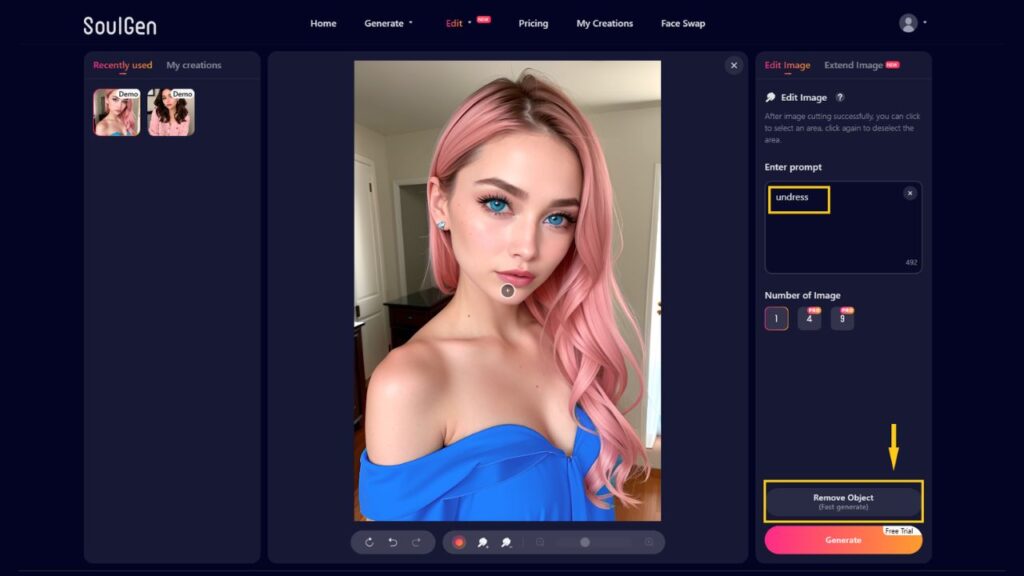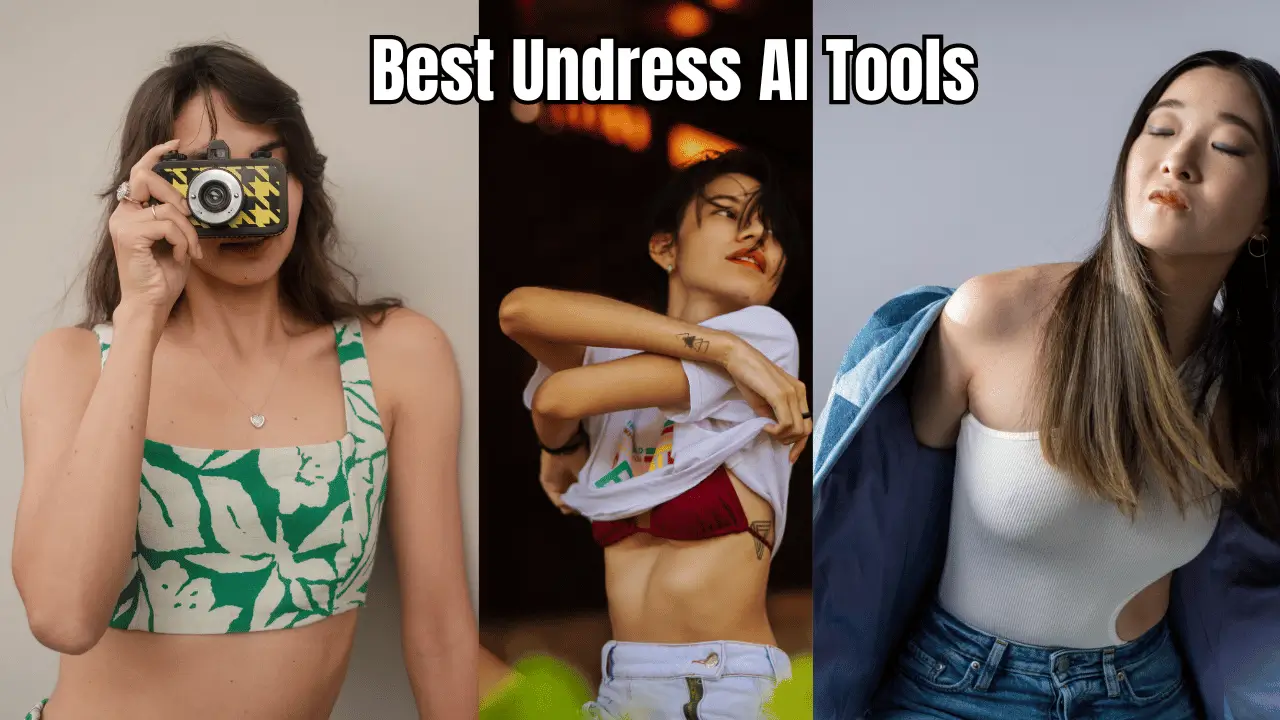AI Clothes Remover: Free Tools & Undressing Apps - Explore Now!
Could a few lines of code truly transform the way we perceive the human form? The emergence of AI-powered tools capable of digitally "undressing" images presents a complex interplay of technological innovation, creative potential, and significant ethical considerations. This rapidly evolving field demands careful examination, urging us to consider both its dazzling capabilities and its potential pitfalls.
The allure of this technology is undeniable. Imagine being able to instantly swap the lingerie of a model in a photograph, transforming it from a classic black to a vibrant pink, all with a simple click. Or envision designers visualizing how garments fit and drape on diverse body types without the need for physical prototypes. AI-driven "clothes removers" offer the promise of unprecedented creative freedom, opening up new avenues for artistic expression and professional applications. These tools, often referred to as "undress AI" or "nudify AI" applications, utilize sophisticated algorithms to identify and isolate clothing areas, allowing for their precise removal and replacement. The results, in the hands of skilled users, can be startlingly realistic, with advanced algorithms ensuring the generated images maintain the original's lighting, shading, and artistic style.
However, the convenience and novelty of these tools mask a far more complicated reality. The very nature of this technology raises serious questions about privacy, consent, and the potential for misuse. The ability to generate realistic nude images of individuals without their knowledge or permission poses a significant threat. The potential for malicious actors to create and distribute these images, causing emotional distress and reputational damage, cannot be ignored. Furthermore, the ease with which these tools can be accessed and used raises concerns about the normalization of non-consensual image manipulation, contributing to a culture where privacy is increasingly vulnerable.
The development of AI-powered image manipulation tools has spawned a diverse ecosystem of applications, each with its own unique features and capabilities. Some, like ClothOff, offer a straightforward interface, allowing users to input character descriptions such as gender, body type, and pose, and then automatically generate unique images based on those prompts. Others, such as Undress AI and Undresser AI, focus on providing a more direct approach, allowing users to upload images and remove clothing with relatively little effort. Still others, like Muke's Undress AI, position themselves as the "best" in the field, promising unparalleled results. These tools range from free online services to paid applications, each vying for user attention in this burgeoning market.
The functionality of these tools is not confined to the removal of clothing. Many offer the ability to swap clothes, change colors, and even alter the overall style of an image. For designers and artists, this can be a powerful tool for visualizing concepts and experimenting with different aesthetics. AI clothes removers can also be used for various creative and professional purposes, ensuring a seamless and realistic finish in image modifications.
One of the most attractive aspects of these tools is the ease with which they can be accessed. Many websites and apps offer free versions of their services, allowing users to experiment with the technology without any financial commitment. Slazzer 3.0 and Undressing AI, for example, offer free online services with no registration required. This accessibility, however, amplifies the potential for misuse, as it lowers the barrier to entry for those seeking to exploit the technology for malicious purposes. It also promotes its use in a variety of creative and artistic fields.
- Thomas Beaudoin Discovering His Relationship Status And More
- Uncovering The Life And Loves Wally Cox And His Wife
The ethical considerations surrounding these technologies are paramount. The potential for non-consensual image creation and distribution raises significant concerns about privacy and the potential for emotional distress. The ability to manipulate images in this way can also contribute to the spread of misinformation and the erosion of trust in visual media. The use of this technology should be approached with great care and an understanding of the potential for harm.
The debate surrounding "undress AI" is complex and multifaceted. It involves not only technological advancements but also the ethical and societal implications of those advancements. A growing number of people in the field of computer science and information technology are researching the topic. As the technology evolves, so too must our understanding of its potential and its limitations. It's critical to navigate this landscape with informed awareness, prioritizing both innovation and responsible use. The future hinges on the ability to balance the creative potential with the imperative of safeguarding individual privacy and preventing misuse.
Here's a table summarizing key features and aspects of "Undress AI" and related technologies:
| Feature | Description |
|---|---|
| Core Functionality | Utilizes AI to remove clothing from images, creating the illusion of nudity. |
| Methods | Works through prompts, uploads, and selection of target areas to eliminate clothing. |
| Applications | Creative projects, fashion design visualization, artistic expression. |
| Techniques | AI algorithms identify and isolate clothing, then remove/replace it while matching lighting and style. |
| Tools | Includes ClothOff, Undress AI, Undresser AI, Muke's Undress AI, Slazzer 3.0, and others. |
| Accessibility | Offers free online services and paid apps. |
| Ethical Concerns | Risk of non-consensual image creation, privacy violations, and potential for misuse. |
| Considerations | Ethical use, informed awareness, and balancing innovation with privacy protection. |
For more information, consult reputable tech news sources and privacy advocacy groups.
Important Note: This article is for informational purposes only and does not endorse or promote any unethical or illegal use of the technologies discussed. It emphasizes the importance of responsible use and awareness of the potential dangers associated with these AI tools.



Detail Author:
- Name : Gwendolyn Toy
- Username : thora.pfeffer
- Email : jerod60@yahoo.com
- Birthdate : 1982-07-01
- Address : 23387 Jacobi Coves East Orval, OK 22438-9250
- Phone : +1-304-238-7193
- Company : Klein, Rau and Hermiston
- Job : Industrial-Organizational Psychologist
- Bio : Occaecati fuga suscipit omnis dolor vel velit sint nostrum. Et cupiditate quibusdam accusamus blanditiis. Sequi sapiente corporis eos commodi dolorum error magni.
Socials
instagram:
- url : https://instagram.com/balistreria
- username : balistreria
- bio : Nam dolore rerum ex dolor delectus fuga. Assumenda et nam voluptatem soluta ab quia.
- followers : 2295
- following : 352
linkedin:
- url : https://linkedin.com/in/balistreria
- username : balistreria
- bio : Blanditiis eius voluptates porro quasi.
- followers : 1345
- following : 256
twitter:
- url : https://twitter.com/adell.balistreri
- username : adell.balistreri
- bio : Voluptatem qui ratione adipisci. Ipsam vel dicta placeat quaerat. Est quo voluptatem facilis laudantium repellat et consequatur.
- followers : 5128
- following : 11
facebook:
- url : https://facebook.com/adellbalistreri
- username : adellbalistreri
- bio : Doloremque illo neque quia atque et aliquid mollitia nostrum.
- followers : 4628
- following : 1998